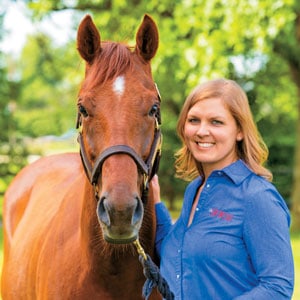Serum Biomarkers for Musculoskeletal Disease (AAEP 2005)
A Colorado State University (CSU) researcher recently reported that he and his colleagues have found significant patterns of six different signals of damage or "biomarkers" in the serum of racehorses with certain musculoskeletal diseases. This means veterinarians are much closer to being able to anticipate the injuries or problems a horse might develop by testing a serum sample.
"This is certainly an exciting time and the culmination of 10 years of work for us," said David D. Frisbie, DVM, PhD, Dipl. ACVS, an assistant professor in CSU’s Equine Orthopaedic Research Laboratory. He presented the study results at the 2005 American Association of Equine Practitioners’ Convention in Seattle, Wash., on Dec. 6.
Biomarkers are indicators of abnormal skeletal tissue turnover, and they are often made up of molecules that are the normal products and byproducts of metabolic processes in the skeletal tissues. "There’s a large palette of different biomarkers that can be broken down into cartilage, bone, and tendon," Frisbie said. These biomarkers have been validated as useful predictors of damage in the laboratory, but only one prior study, performed at the Royal Veterinary College in London, examined biomarkers in a clinical setting. That study showed significant biomarker differences in horses with dorsal metacarpal disease (bucked shins) compared to horses with normal shins.
Frisbie and colleagues built on that research and looked at six serum biomarkers in 2- and 3-year-old Thoroughbred racehorses in training that sustained a single musculoskeletal injury. The injuries included intra-articular fragmentation (bone chip off a joint surface), injury to a tendon or ligament, an incomplete or complete non-articular fracture, and periostitis (inflammation of the periosteum, the membrane that covers bone in areas other than joints)
Create a free account with TheHorse.com to view this content.
TheHorse.com is home to thousands of free articles about horse health care. In order to access some of our exclusive free content, you must be signed into TheHorse.com.
Start your free account today!
Already have an account?
and continue reading.

Written by:
Stephanie L. Church, Editorial Director
Related Articles
Stay on top of the most recent Horse Health news with















